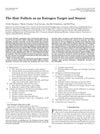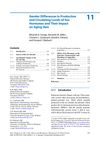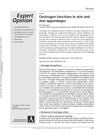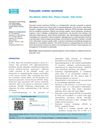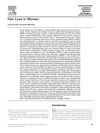Ovarian Hormones and Adrenal Androgens During a Woman's Life Span
September 2001
in “
Journal of The American Academy of Dermatology
”
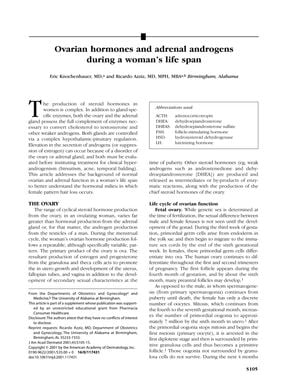
TLDR Women's ovarian hormones and adrenal androgens change throughout life, affecting hair loss and health.
The document from September 2001 discusses the production and regulation of ovarian hormones and adrenal androgens throughout a woman's life span, highlighting their role in female pattern hair loss. It describes the conversion of cholesterol to testosterone and other androgens by the ovary and adrenal gland, regulated by the hypothalamic-pituitary axis. The life cycle of ovarian function is detailed, from fetal development to menopause, noting the complexity of hormone production during the menstrual cycle. Clinical hyperandrogenism, which can lead to hirsutism, acne, and balding, is also discussed, emphasizing the need to evaluate ovarian and adrenal glands before treatment. A longitudinal study of 5 prepubertal girls showed an increase in adrenal androgens, indicating the onset of adrenarche, which is linked to a higher risk of PCOS in adulthood. Adrenopause is marked by a decrease in DHEAS and DHEA levels from the mid-20s, with androstenedione levels plateauing after age 60. In 145 hyperandrogenic women, DHEAS levels decreased with age starting around 20 years old. Adrenal androgen levels are high at birth, decrease sharply afterward, increase around age 5-7, reach adult levels by puberty, and decrease linearly after the second decade of life, potentially contributing to increased risks of hair loss and other health issues in aging women.
